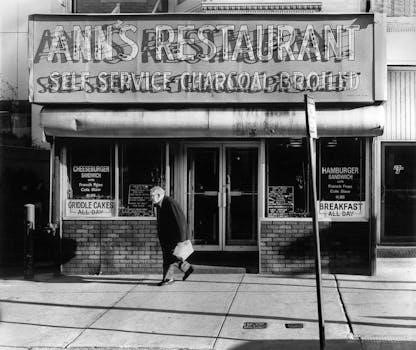US History Test Questions and Answers PDF⁚ A Comprehensive Guide
This guide offers comprehensive resources for mastering US History tests. Access practice questions, understand different question types, and learn effective strategies. Explore key topics, analyze documents, and prepare for exams using PDF resources.
Understanding US History Practice Tests
US History practice tests are invaluable tools for students preparing for exams. These tests mirror the format and content of actual assessments, providing a realistic simulation of the testing environment. By engaging with practice tests, students can familiarize themselves with the types of questions they will encounter, including multiple-choice, short answer, and free-response essays. These tests help students identify their strengths and weaknesses in specific historical periods or topics.
Furthermore, practice tests allow students to hone their test-taking strategies, such as time management and question selection. Analyzing the answer keys and explanations provided with these tests is crucial for understanding the reasoning behind correct answers and learning from mistakes. Practice tests are readily available online as PDFs, offering convenient access to a wealth of study material. Regular practice with these resources can significantly improve a student’s confidence and performance on US History exams. They serve as a benchmark to track progress and adjust study plans accordingly.
Types of Questions in US History Tests
US History tests employ a variety of question formats to assess students’ understanding of historical events, concepts, and analytical skills. Multiple-choice questions are common, requiring students to select the best answer from a set of options. These questions test recall of factual information and comprehension of historical arguments. Short answer questions demand concise, focused responses, often requiring students to explain a specific event or concept. Free response questions, or essays, require students to demonstrate in-depth knowledge and critical thinking by constructing well-supported arguments.
Document-based questions (DBQs) are also frequently included, challenging students to analyze primary source documents and synthesize information to answer a specific prompt. These different question types assess various skills, including memorization, comprehension, analysis, and synthesis. Understanding the format and demands of each question type is crucial for effective test preparation. Students should practice answering each type of question to develop the necessary skills and strategies for success. Familiarity with these formats will contribute to better performance on US History exams.
Multiple Choice Questions⁚ Strategies and Examples
Mastering multiple-choice questions on US History tests requires a strategic approach. Begin by carefully reading the question and identifying key terms. Analyze each answer option, eliminating those that are clearly incorrect or irrelevant. Look for distractors – answers that seem plausible but contain inaccuracies or misinterpretations. Consider the historical context and the specific information being tested.
If unsure, use the process of elimination to narrow down the choices. Pay attention to qualifying words like “always,” “never,” “all,” or “none,” as these often indicate incorrect answers. If time permits, revisit questions you found challenging; Practice with sample questions to familiarize yourself with the format and difficulty level. For example⁚ Which event led to the War of 1812? (A) The XYZ Affair (B) Impressment of American sailors (C) The Louisiana Purchase (D) The Embargo Act of 1807. The correct answer is (B). Regular practice and a systematic approach will improve your performance on multiple-choice sections. Always read each option carefully!
Short Answer Questions⁚ Techniques for Success
Short answer questions demand concise and direct responses. Start by thoroughly understanding the question’s prompt. Identify the key historical event, concept, or person it addresses. Develop a clear and focused answer that directly responds to the question. Avoid rambling or providing irrelevant information. Structure your response with a topic sentence that states your main point, followed by supporting details and evidence.

Use specific historical facts, dates, and names to strengthen your answer. Aim for accuracy and clarity in your writing. Proofread your response for grammatical errors and spelling mistakes. Consider the scope of the question and tailor your answer accordingly. For instance, if asked about the impact of the Civil War, focus on key effects like the abolition of slavery, Reconstruction, and the changing role of the federal government. Effective planning and precise execution are crucial for success in short answer questions. Always aim for quality over quantity. Make every word count and demonstrate your historical knowledge effectively.
Free Response Questions⁚ Mastering the Essay Format
Free response questions require well-structured essays demonstrating in-depth historical understanding. Begin by carefully analyzing the prompt to identify the core question. Develop a clear thesis statement that directly addresses the prompt and outlines your main argument. Organize your essay into distinct paragraphs, each focusing on a specific aspect of your argument. Start each paragraph with a topic sentence that introduces the main idea.
Support your claims with specific historical evidence, including dates, names, events, and primary source references. Analyze the evidence to explain its significance and how it supports your thesis. Create a strong, coherent narrative that connects your ideas logically. Address counterarguments or alternative interpretations to demonstrate a comprehensive understanding. Conclude your essay with a summary of your main points and a restatement of your thesis. Proofread for grammar, spelling, and clarity. Effective planning and execution are essential for mastering the essay format. Always aim for quality, clarity, and historical accuracy.
Key US History Topics Covered in Tests
US History tests commonly cover a range of crucial periods and events. Expect questions on the Colonial Era, including the motivations for settlement, colonial life, and the road to revolution. The American Revolution itself is a significant topic, focusing on the causes, key battles, and the establishment of a new nation.
The Constitution and the early Republic are also frequently tested, emphasizing the debates over ratification, the Bill of Rights, and the challenges faced by the first presidents. The Civil War and Reconstruction are central, requiring knowledge of the causes of the war, key battles, Reconstruction policies, and their lasting impact. The Gilded Age and Progressive Era are important for understanding industrialization, urbanization, and reform movements. The World Wars, the Cold War, and the Civil Rights Movement are also essential areas of study. Understanding these key topics is crucial for success.
Westward Expansion and its Impact

Westward Expansion is a pivotal topic in US History, often appearing in tests. Understanding its motivations, such as the desire for land, resources, and opportunity, is crucial. The concept of Manifest Destiny played a significant role, fueling the belief in American expansion across the continent.
The impact on Native American populations is a key area to study. Westward expansion led to displacement, conflict, and the erosion of Native American cultures and sovereignty. The economic consequences, including the growth of agriculture, mining, and the development of transportation networks like railroads, are also important. Furthermore, examine the social and political tensions that arose, such as debates over slavery in new territories. Questions may require analyzing the perspectives of different groups involved, evaluating the long-term effects on the environment, and assessing the legacy of Westward Expansion on American identity and development. Understanding the antagonism that occurred between ethnic and cultural groups is also essential.

Analyzing Primary Source Documents
Analyzing primary source documents is a vital skill for US History tests. These documents offer direct insights into the past, providing firsthand accounts and perspectives. The ability to effectively interpret these sources is crucial for answering document-based questions (DBQs) and free-response questions (FRQs).
Start by identifying the author, audience, purpose, and historical context of the document. Consider the author’s biases and perspectives. Look for key themes, arguments, and evidence presented in the document. Compare and contrast different primary sources to gain a more comprehensive understanding of the topic. Pay attention to the language, tone, and imagery used in the document, as these can provide valuable clues about the author’s intentions and the historical context. Practice identifying the main idea and supporting details, and draw inferences based on the evidence presented. The ability to understand the source and the statement is vital.
Preparing for the AP US History Exam
Preparing for the AP US History Exam requires a strategic approach. Familiarize yourself with the exam format, which includes multiple-choice questions, short-answer questions (SAQs), and free-response questions (FRQs). The exam is 3 hours and 15 minutes long, with a 95-minute multiple-choice and short-answer section, and a 100-minute free-response section.

Review key historical periods, themes, and events. Focus on understanding cause-and-effect relationships, patterns of change, and continuity over time. Practice analyzing primary source documents and developing strong historical arguments. Utilize AP US History review books, online resources, and practice exams to assess your knowledge and identify areas for improvement. Create a study schedule that allows you to cover all the necessary material. Work to ensure you understand the material and have time to practice and review the material that you have been given. Seek help from teachers or tutors if needed.
Accessing US History Test Resources Online
Numerous online resources are available to aid in your US History test preparation. Websites offer practice tests, study guides, and historical documents. Many educational platforms provide interactive quizzes and video lessons covering key topics. Look for resources that align with your specific test requirements, such as the AP US History exam or state-specific assessments.
Explore online archives and digital libraries for primary source materials, including letters, speeches, and government documents. These resources can help you develop critical thinking and analytical skills. Utilize search engines to find relevant articles, essays, and scholarly publications. Be sure to evaluate the credibility of online sources before relying on them for information. Look for sources from reputable institutions or academic journals. Take advantage of free resources offered by universities and educational organizations. PDF documents containing practice questions and answer keys are also readily accessible online.
